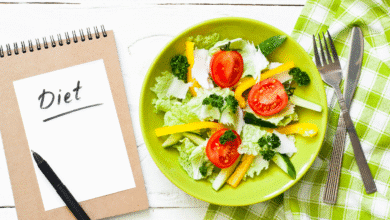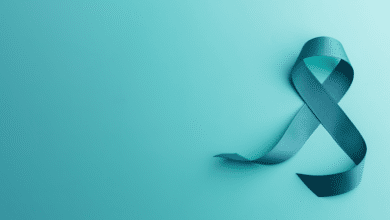Keto & Low-Carb Your Guide to Healthy Eating
The world of nutrition is always changing, and the keto & low-carb lifestyle is becoming more popular. This guide will explore the ketogenic diet as a healthy eating option. It will cover the basics, meal planning, and the health benefits.
The keto diet focuses on eating very few carbs and lots of fat. It’s about eating 70% fat, 20% protein, and just 10% carbs.
Many people follow this diet for weight loss and better metabolic health. It can make insulin work better. There are different types of keto diets, like the standard and cyclical ones.
Knowing the basics helps you make better choices for your diet.
Key Takeaways
- The ketogenic diet is composed of 70% fat, 20% protein, and 10% carbohydrates.
- Following a keto diet can lead to significant weight loss without the need for calorie counting.
- Emphasizing high-fat, low-carb foods is essential for entering ketosis.
- Healthy meal planning can support long-term adherence to the ketogenic lifestyle.
- Incorporating various types of keto diets allows for flexibility in dietary choices.
Understanding the Keto Diet
The ketogenic diet has become popular for its focus on eating a lot of fat and very few carbs. This means cutting down on carbs and eating more fat. This change helps the body switch from using glucose to ketone bodies for energy.
What is the Ketogenic Diet?
This diet limits carbs to 50 grams a day or less. That’s about 5% of your daily calories from carbs. Some people might eat up to 70 grams of carbs, but the goal is to keep carbs low to enter ketosis.
How Does the Keto Diet Work?
This diet swaps carbs for fats and moderate protein. You should get 70% to 80% of your calories from fats and 15% to 30% from proteins. This mix helps you stay in ketosis. Getting into ketosis can help with weight loss, but sticking with it can be hard. Some might experience constipation or the “keto flu” when they first start.
Keto & Low-Carb: Your Guide to Healthy Eating
Keto & low-carb diets focus on eating fewer carbs to help you eat healthier and live a keto lifestyle. A low-carb diet usually gets less than 26% of its calories from carbs. This means if you eat 2000 calories a day, you should have less than 130 grams of carbs.
On the other hand, the keto diet limits carbs to 5-10% of your total calories. That’s about 20-50 grams of carbs a day. This change makes your body use fat for energy instead of carbs.
There are different ways to follow a low-carb diet, like the Atkins and South Beach diets. The Atkins diet starts with about 20 grams of carbs a day. The South Beach diet focuses on eating lean meats and healthy fats while cutting carbs. Both diets can help with weight control and better health.
Choosing healthy snacks is key to keeping your energy up and fighting off cravings. Good snacks include Greek yogurt, nuts, cheese, and fruits that are not too sweet. Tips like picking meat or fish dishes when eating out and drinking water instead of soda help you stick to a low-carb diet.
Following a ketogenic diet has many benefits. It can improve brain function and help reduce seizures in children. It also leads to weight loss and better heart health. This diet is part of a complete plan for living a healthy life.
The Science Behind Ketosis
Ketosis is a key part of metabolic health. It happens when the body switches from using carbs for energy to using fat. This leads to the creation of ketone bodies. This shift helps with fat burning, making ketosis a good choice for better health and weight management.
What is Ketosis?
Ketosis is a metabolic state that comes from eating fewer carbs. When carbs are low, the body uses up its glucose stores. Then, the liver makes ketone bodies from fat. This not only fuels the body but also boosts fat burning and gives the brain and organs a new energy source.
The diet for ketosis is mostly fat, some protein, and a little carbs. This mix helps the body easily go into ketosis.
Health Benefits of Entering Ketosis
Being in ketosis does more than help with weight loss. It can also improve blood sugar and insulin levels, making it good for diabetes management. Studies show it can help with epilepsy treatment, as seen in a 2007 study in Pediatric Neurology.
Research also shows that ketogenic diets lead to more weight loss than other diets. A 2013 study found big differences in weight loss between very low-carb and low-fat diets. This means ketosis could help people reach their health goals, as many Americans try to lose weight each year.
Ketogenic diets also offer benefits beyond weight loss. A study at KU Medical Center found it helped people with Alzheimer’s disease think better. With lots of scientific support, the health perks of ketosis are clear.
| Study Year | Study Focus | Key Findings |
|---|---|---|
| 2007 | Epilepsy Treatment | Positive impact on epilepsy management |
| 2016 | Exogenous Ketone Supplementation | Effects on blood ketone, glucose, and triglyceride levels |
| 2013 | Keto & Cancer Therapy | Prolonged survival rates in experimental models |
| 1920 | Treatment of Diabetes Mellitus | Positive outcomes with high-fat diets |
| 1998 | Efficacy in Children | Multicenter study showing effective results |
| 2013 | Weight Loss Comparison | Significant weight loss observed |
| 2003 | Calorie Restriction Study | Impacts on body weight and cardiovascular risk |
How to Start a Ketogenic Diet
Starting a ketogenic diet means learning some basic rules. These rules help you succeed. You’ll need to cut down a lot on carbs. Many people try to eat 20 to 50 grams of carbs a day.
This helps your body switch to burning fat for energy instead of carbs. This is called ketosis.
Basic Rules of the Keto Diet
The rules for a ketogenic diet are simple but important. Here’s what you need to do:
- Limit Carbohydrates: Aim for 20-30 grams of net carbs daily.
- Increase Healthy Fats: About 70-75% of your calories should come from healthy fats.
- Moderate Protein Intake: Keep protein around 20-25% of your total calories.
- Stay Hydrated: Drink at least 6-8 glasses of water every day.
- Electrolyte Balance: Think about taking electrolyte supplements to help with ketosis side effects.
Types of Keto Diets
There are different keto diets for various preferences and goals. Each type has its own features:
| Type of Keto Diet | Description | Typical Macro Breakdown |
|---|---|---|
| Standard Ketogenic Diet (SKD) | Consistent low-carb intake, typically 20-50 grams daily, focusing on healthy fats. | Carbs: 5%, Protein: 20-25%, Fat: 70-75% |
| Cyclical Ketogenic Diet (CKD) | Alternates between periods of strict keto and higher carb intake days. | Varies significantly based on cycle. |
| Targeted Ketogenic Diet (TKD) | Allows for additional carbs around workout times for better energy. | Adjusts carb intake based on activity level. |
| High-Protein Keto | Similar to SKD but with higher protein consumption (30-35% of calories). | Carbs: 5%, Protein: 30-35%, Fat: 60-65% |
| Lazy Keto | No tracking of macros, focusing only on limiting carbs without strict measures. | Varies widely based on individual choices. |
Foods to Include on a Keto Diet
Following a ketogenic diet means picking foods that help your health and keep you in ketosis. It’s important to know what keto foods are. Focus on high-fat foods, low-carb vegetables, and good protein sources.
High-Fat Foods and Their Benefits
High-fat foods are key for a keto diet. Getting 70-80% of your daily calories from fats keeps your energy up and supports your metabolism. Foods like avocados, olive oil, and fatty fish are great. They give you important nutrients and omega-3 fatty acids.
- Avocados: They’re full of healthy fats, with 30 g of fat and only 17 g of carbs, mostly fiber.
- Fatty Fish: Salmon has no carbs, 4 g of fat, and 17 g of protein per 3 ounces.
- Olive Oil: It’s good for your heart and may protect against heart disease and some cancers.
Low-Carb Vegetables to Enjoy
Low-carb vegetables add fiber and important nutrients to your meals. Adding spinach, zucchini, and bell peppers keeps your diet balanced and nutritious.
- Zucchini: It has just 3 g of carbs per 3.5 ounces and is full of vitamins.
- Bell Peppers: They’re low in carbs and give you over 100% of your daily vitamin C in one serving.
Protein Sources Suitable for Keto
Choosing lean meats, eggs, and dairy is a good way to get enough protein without going over on carbs. These foods help with muscle repair and keep you in ketosis.
- Poultry: Chicken and turkey are high in protein but have almost no carbs.
- Eggs: Eggs are a great protein source and keep you feeling full.
- Meat: Beef gives you about 123 g of protein and 0 g of carbs in a 3.5-ounce serving.
Foods to Avoid on a Keto Diet
For a successful ketogenic diet, it’s important to know which foods to avoid. Knowing the foods to avoid helps you stay in ketosis. This section will cover high-carb foods to cut out and explain why some products might not help your diet.
High-Carb Foods to Eliminate
To get the best results on a keto diet, some foods should not be eaten. Here’s a list of foods to avoid:
- White bread: Contains about 13 grams of carbs per slice.
- Cooked white rice: A half-cup serving has approximately 26.5 grams of carbs.
- Potato chips: One serving contains close to 14 grams of net carbs.
- Beer: A single can can have around 13 grams of carbs.
- Bananas: With over 20 grams of net carbs each, they should be completely eliminated.
- Sweet potatoes: Their high carbohydrate content makes them a no-go.
- Dried fruits: Even a 1/4 cup can rack up to 31 grams of carbs.
Common Misleading Foods
Some products labeled as “healthy” can actually hinder your keto diet due to hidden carbs. Be cautious of:
- Low-fat or fat-free yogurt: Often loaded with added sugars.
- Salad dressings: Many contain hidden sugars, making them unsuitable.
- Sugar-free syrups: Generally still high in carbs, hence misleading.
- Processed meats: Options vary significantly, such as glazed ham with 7.3 grams of net carbs versus deli ham, which has 0 grams.
| Food Item | Net Carbs (per serving) | Comments |
|---|---|---|
| Croutons | 3g | Limit salad topping options |
| Cooking White Pasta | 33g | Too high for keto |
| Honey | 17g | Eliminate due to high sugar |
| Ketchup | 3g | Use with caution |
| Medjool Date | 18g | Contains excessive carbs |
Meal Planning for a Keto Lifestyle
Planning your meals on a keto diet can make sticking to it much easier. Aim for a mix of fats, proteins, and veggies. This keeps your macros right.
Fats should be 70–75% of your daily calories. Proteins should be about 15–20%. Carbs should be limited to 20–50 grams. Planning ahead makes meals interesting and helps everyone, whether you’re new or experienced with the diet.
Creating a Keto Meal Plan
When making a keto meal plan, focus on lots of fats, good proteins, and veggies that don’t raise your blood sugar. Here’s what a week of meals could look like:
| Day | Breakfast | Lunch | Dinner |
|---|---|---|---|
| Monday | Scrambled eggs with cheddar cheese | Grilled chicken with avocado salad | Baked salmon with asparagus |
| Tuesday | Greek yogurt with berries | Tuna salad with olive oil | Ground beef stir-fry with cauliflower rice |
| Wednesday | Smoothie with spinach and coconut milk | Spinach salad with bacon and eggs | Zucchini noodles with pesto |
| Thursday | Omelette with mushrooms and bell peppers | Roast beef with green beans | Pork chops with cauliflower mash |
| Friday | Cheese and avocado slices | Shrimp with garlic butter | Roasted chicken thighs with broccoli |
| Saturday | Chia seed pudding | Egg salad lettuce wraps | Beef kebabs with grilled vegetables |
| Sunday | Breakfast casserole with sausage | Caprese salad with fresh basil | Eggplant lasagna |
Easy Low-Carb Recipes to Try
Here are some easy low-carb recipes for your keto meal plan:
- Cheddar Cheese Crisps: Bake slices of cheddar cheese until crispy for a quick snack.
- Stuffed Avocados: Fill avocado halves with tuna salad or chicken salad for a filling meal.
- Cauliflower Pizza: Use grated cauliflower as a pizza crust, topped with cheese and your favorite low-carb toppings.
- Zoodles with Marinara: Spiralize zucchini and toss with homemade marinara sauce for a delightful pasta alternative.
- Egg Muffins: Whisk together eggs, cheese, and vegetables, pour into a muffin tray, and bake for easy breakfasts.
Benefits of a Low-Carb Diet
A low-carb diet has many health benefits. It’s great for losing weight and keeping it off. By cutting down on carbs, you tend to eat fewer calories.
You replace carbs with more protein and fat. This combo helps you lose weight. Studies show low-carb diets work better than low-fat diets in the first few months.
Some people lose 2-3 times more weight at the start. This is because low-carb diets help you burn more fat.
Weight Loss and Management
Many find they lose a lot of fat, especially around the belly, on a low-carb diet. This diet targets harmful visceral fat. As you lose weight, you see more health benefits.
Low-carb diets lower blood fats and reduce the risk of heart disease. They also increase HDL cholesterol, which is good for the heart.
Blood Sugar Control and Diabetes Management
A low-carb diet helps control blood sugar, which is great for people with diabetes or insulin resistance. It lowers blood sugar and insulin levels, making diabetes easier to manage. This diet also lowers blood pressure, which helps prevent heart disease.
Studies show that low-carb diets help with metabolic syndrome symptoms. These include belly fat, high blood pressure, and bad cholesterol levels.
| Health Benefit | Effect |
|---|---|
| Weight Loss | Initial loss of 2-3 times more weight compared to low-fat diets |
| Abdominal Fat Reduction | Targeting harmful visceral fat |
| Blood Triglycerides | Significant lowering, reducing heart disease risk |
| HDL Cholesterol | Increased levels, promoting cardiovascular health |
| Blood Sugar Levels | Drastic reduction, aiding diabetes management |
| Blood Pressure | Significant reductions, decreasing heart disease risks |
Challenges of Following a Keto Diet
The keto diet offers many benefits but also has its challenges. Knowing these challenges can help people do better on their keto journey. It’s important to know the common mistakes to avoid for a successful keto experience.
Common Mistakes on the Keto Diet
Many find it hard to follow the keto diet because they don’t understand the right food ratios. The diet needs 5% calories from carbs, 20% from protein, and 75% from fat. Getting these numbers wrong can slow down progress and lead to nutrient shortages.
Also, some eat too few calories, which makes the diet hard to stick to and can slow down metabolism.
Other common mistakes include:
- Not eating enough fat, which can make you feel tired.
- Not preparing for the switch to ketosis, which takes about three weeks.
- Not eating a variety of foods, which can lead to nutrient shortages.
Potential Side Effects
Switching to a ketogenic diet can cause side effects. The “keto flu” is a term for symptoms like tiredness, headaches, and mood swings during the first few weeks. Feeling stressed about food can lead to binge eating or feelings of guilt.
Other possible side effects include:
- Changes in digestion, like constipation or diarrhea.
- Higher LDL cholesterol levels, which can be bad for heart health.
- For people with kidney disease, the diet may increase the risk of needing dialysis.
To overcome these challenges, a balanced approach is key. Being aware of common mistakes and managing side effects can make the keto diet more enjoyable and sustainable.
Maintaining the Keto Diet Long-Term
Staying on a ketogenic diet for a long time needs careful planning and being flexible. People who want to keep up with keto must make habits that help them stay on track and improve their health. Making meals ahead, knowing how to eat out, and focusing on balanced nutrition are key.
Tips for Sustaining a Keto Lifestyle
Here are some tips to help you stick with the ketogenic diet for a long time:
- Plan Ahead: Make meals early to stop eating on impulse. Having keto snacks ready can stop you from eating too many carbs.
- Stay Informed: Learn more about keto foods and new nutrition advice. Knowing more helps you make better food choices.
- Join a Community: Connect with others who eat like you. Being part of a group gives you support and tips for staying on track.
- Monitor Progress: Watch your eating, weight, and health to see what works best for you.
- Harmonize with Health Goals: Make sure your keto diet fits with your health and fitness goals. This keeps you motivated.
Incorporating Carb Cycling
Carb cycling is a great way to keep up with keto. It means eating more carbs on some days and fewer on others. This can make your metabolism more flexible. It can also stop the problems of eating too few carbs, like losing muscle and feeling tired. Many people find carb cycling helps with losing weight and reaching fitness goals while eating a more varied diet.
Here’s a look at the good and bad of carb cycling for keto:
| Benefits of Carb Cycling | Considerations |
|---|---|
| Supports metabolic flexibility | Needs careful planning to avoid eating too many carbs |
| May improve workout performance | Can cause weight changes if not watched closely |
| Gives a break from strict dieting | Can be hard for beginners |
Conclusion
The keto diet is a great way to live a healthy life. It focuses on eating a lot of fat and very few carbs. This helps your body enter a state called ketosis. Studies show it can help with weight loss and better metabolic health.
More people are trying the keto diet, thanks to its growing popularity. This shows how important it is to eat healthily. The diet is not just for losing weight. It can also help people with type 2 diabetes or metabolic syndrome by managing blood sugar and improving insulin sensitivity.
But, everyone’s body is different, so results can vary. It’s best to start slowly and get support from others. This can help avoid any side effects and make it easier to stick with the diet.
Starting a keto diet means thinking about what’s best for your health. There are many resources out there to help with meal plans, recipes, and finding support. These can be key to making healthy eating a long-term success.
FAQ
What is the difference between a ketogenic diet and a low-carb diet?
A ketogenic diet cuts down on carbs to 5% to 10% of daily energy, boosting fat to 70% of calories. This leads to ketosis, where the body uses fat for fuel instead of glucose. Low-carb diets, however, allow more carbs and don’t always lead to ketosis.
How can I enter ketosis quickly?
To quickly enter ketosis, cut carbs to 20 to 50 grams a day. Increase healthy fats and keep protein levels up. Intermittent fasting and more exercise can also help speed up the process.
What are some common high-fat foods suitable for a ketogenic diet?
Great high-fat foods for a keto diet include avocados, olive oil, nuts like almonds and walnuts, and seeds like chia and flaxseeds. Fatty fish like salmon and mackerel, and dairy products like cheese and heavy cream are also good choices.
Are there any foods I should avoid to stay in ketosis?
Yes, to stay in ketosis, avoid foods high in carbs. This means no grains, sugary snacks, starchy veggies like potatoes, and most fruits. But, you can have small amounts of berries.
Can I still enjoy social events while following a keto diet?
Yes, you can still enjoy social events on a keto diet. Plan ahead by looking at menus, choosing low-carb options, suggesting keto-friendly dishes, and practicing mindful eating. This way, you can stick to your diet without missing out.
What are the potential side effects of starting a ketogenic diet?
Starting a keto diet might cause the “keto flu,” with symptoms like fatigue, headaches, and irritability. You might also see changes in digestion, nutrient deficiencies, or cravings for carbs at first.
How can I sustain a ketogenic lifestyle long-term?
To keep a keto lifestyle going, focus on meal prep and finding low-carb recipes you like. Regularly check your dietary needs and consider carb cycling to keep your metabolism flexible and reach your health goals.



